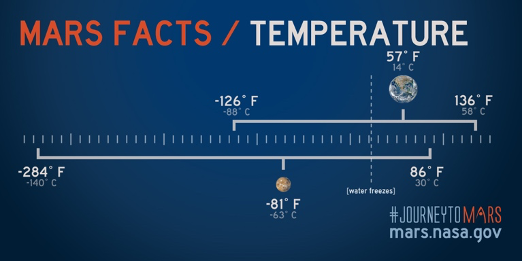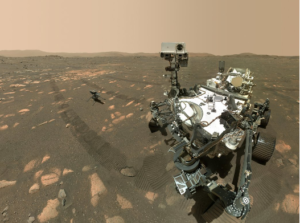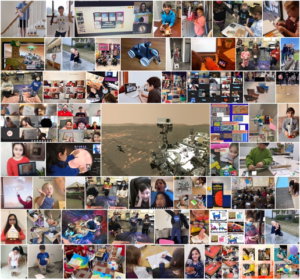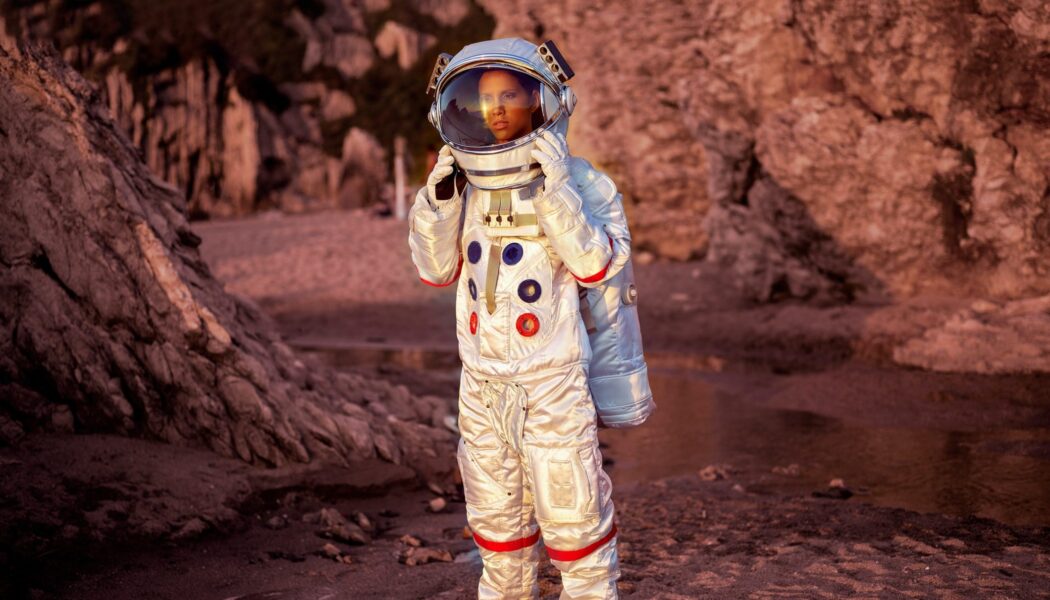Ah, summer! A time for exploration, inspiration, and in afterschool – enrichment. Especially after this last challenging year, kids and leaders alike are in need of refreshing, inspiring things to learn and experience.
Why not spend the summer on Mars, at least virtually? With temperatures heating up around the country, thinking about Mars may help cool you down. In Martian summers, the surface temperature can occasionally be what we’d call “comfortable” here on Earth, but on the same night can get well below zero (Fahrenheit)! Because Mars’ orbit is further away from the sun than the Earths, its year – and also its seasons – are almost twice as long as Earth’s. (Yes, Mars has seasons, too, because its axis is tilted similarly to Earth’s.)

Perseverance, the latest NASA rover to safely land on Mars, measures the daily surrounding temperature, along with wind speed and dust, and reports it back to Earth. Your kids can watch the times of sunrise and sunset change from day to day to see if the Martian days, called “sols,” are getting longer (heading towards summer) or shorter (heading towards winter). Over the weeks and months, they can also keep track of the temperatures to see what sols are the warmest so they know when Perseverance is enjoying high summer, or the coldest so they know its deep winter (when Perseverance must use more of its energy to stay warm). (Hint: in 2021, Mars’s northern hemisphere summer overlaps with part of Earth’s!)
 Not only did the Mars 2020 mission landing deliver the Perseverance Rover to Mars, but also carried the Ingenuity Helicopter to the Red Planet. In 2021, Ingenuity became the first aircraft in history to make a powered controlled flight on another planet! Quite a feat when the Martian atmosphere is one hundred times thinner than Earth’s. And so, Ingenuity transitioned from being an engineering test to a full-fledged scout, looking for good routes for the rover to go next!
Not only did the Mars 2020 mission landing deliver the Perseverance Rover to Mars, but also carried the Ingenuity Helicopter to the Red Planet. In 2021, Ingenuity became the first aircraft in history to make a powered controlled flight on another planet! Quite a feat when the Martian atmosphere is one hundred times thinner than Earth’s. And so, Ingenuity transitioned from being an engineering test to a full-fledged scout, looking for good routes for the rover to go next!
Bring Mars into your summer program with NASA’s Mission to Mars Student Challenge for camps. This series of free hands-on activities takes you and your youth through all phases of exploring Mars – from learning about Mars, to launch and landing, to exploring the surface – with a variety of learning methods. Depending on their interest, kids can learn science through art, play games, experience fun design challenges, and further develop their coding skills. Plus, you can share your camp’s work on the Student Showcase!
 For an exciting bonus, in summer 2021, your youth can learn directly from Mars scientists and engineers discussing their STEM careers with these 1-hour kids’ sessions!
For an exciting bonus, in summer 2021, your youth can learn directly from Mars scientists and engineers discussing their STEM careers with these 1-hour kids’ sessions!
To support your staff, on-demand trainings are available, specially targeted just for you, the out-of-school time community. Front-line staff, counselors, and STEM coordinators get entry-level, practical training for leading hands-on activities, and tips for implementing the Student Challenge in your program.
Stay cool this summer and keep kids engaged, active, and thinking. Join the over one million kids that have experienced the Mission to Mars Student Challenge!
P.S. NASA selected two new missions to study Venus, the hottest planet in the solar system. After your summer on Mars, you may need to think next about Venus, when Earth’s winter rolls around!
For breakfast today, I enjoyed orange juice with sparkling soda, and a bowl of summer peaches and berries!
Author: @leslielowes
